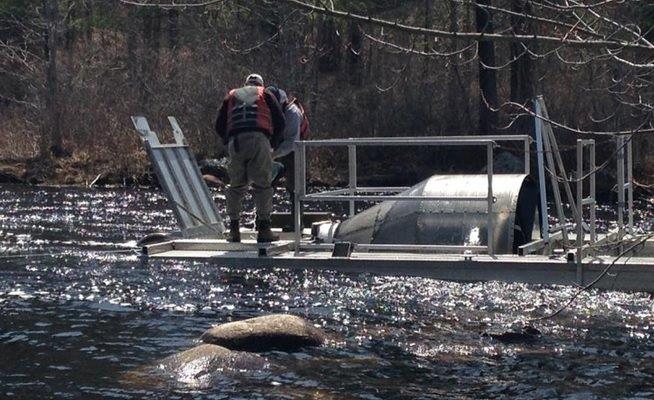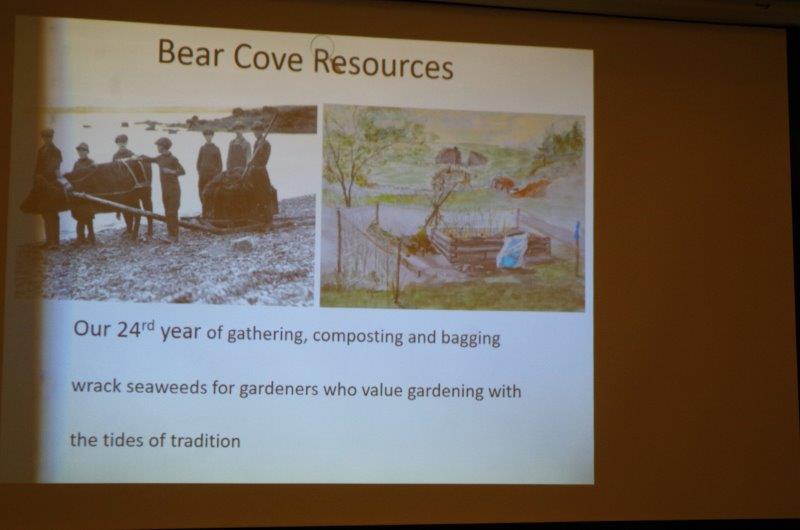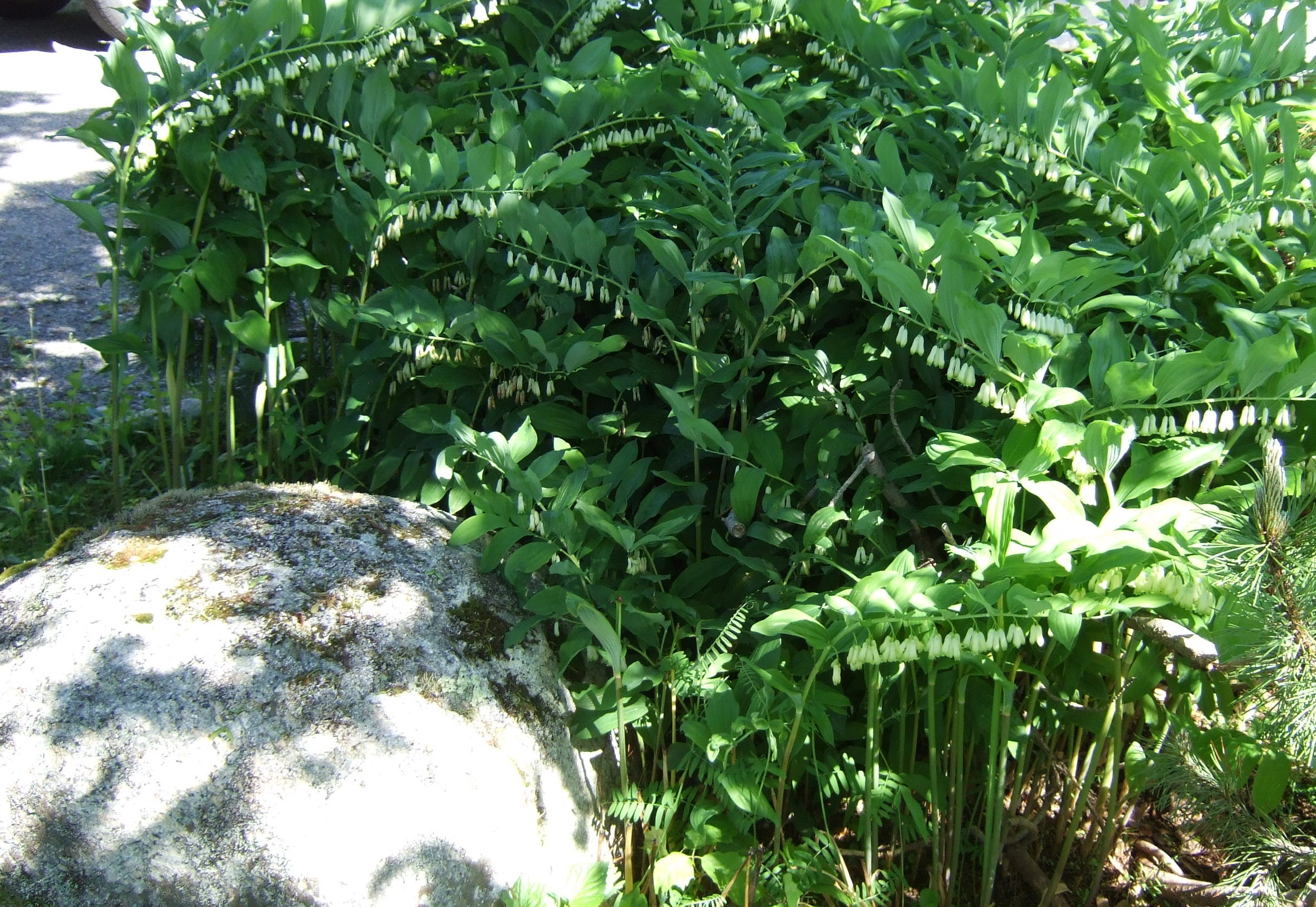The Endangered Atlantic Whitefish, Past, Present and Future
On Monday, September 19th, Andrew Breen gave a presentation on the history of the Atlantic Whitefish in the Petite Riviere and work currently being conducted by the Bluenose Coastal Action Foundation, Inland Fisheries and DFO Science, (Species at Risk) and the potential demise of the species.
Andrew Breen is a graduate of the Fisheries and Aquaculture Program at Malaspina – College, Nanaimo, B.C. A Chester resident for 14 years, Andy is currently employed by Coastal Action as a Fisheries Technician and Project Coordinator for the Atlantic Whitefish Recovery Project.
I did research for this blog & much of the information is from articles by Zack Metcalfe . I would like to give credit to Zack Metcalfe, freelance environmental journalist, author and writer of Shades of Green. He operates out of Halifax.
The Atlantic whitefish species, a member of the salmon family is so rare they can be found in only four lakes in all the world, three of which adjoin one another in Nova Scotia’s Lunenburg County.These three lakes, all near Hebbville, are the Hebb, Milipsigate and Minamkeak.
Andrew spoke to members and guests of Chester Garden Club telling us that the Atlantic whitefish is a beautiful species at first glance, silver on its sides and underbelly, with a back of either dark blue or green, and in these three lakes they grow to 20-25 centimetres. This was the very first species of fish to become formally “endangered” in Canada back in April 1984 and since then their circumstances haven’t improved much.
There was a time when they occupied two separate watersheds in Nova Scotia — the Petite Rivière, of which the above three lakes are a part, and Tusket River, on the province’s southern tip near Yarmouth. But damming and the introduction of invasive species destroyed the Tusket River population, its last confirmed member hooked in 1982. This left only Petite Rivière, an ecological stronghold of sorts, holding out against the growing threat of extinction.
Andrew told us the smallmouth bass, native to the Great Lakes of southern Ontario, have been in Petite Rivière since at least the late 1990s, likely introduced by anglers hoping to bring their favourite game fish closer to home. Since then these bass have multiplied and imposed their considerable appetites on this fragile ecosystem. Andrew’s cut them open in the past and found as many as 20 young-of-the-year gaspereau in a single bass’ stomach, and in one unfortunate case, the half digested body of an Atlantic Whitefish. These bass aren’t just out-competing whitefish for food and habitat; they’ve added whitefish to the menu.
And then there’s the chain pickerel, introduced sometime around 2010, Andrew guesses. While analyzing their stomach contents he’s discovered such oddities as muskrats, ducks, snakes, newts, frogs and in one famous instance, two baby snapping turtles, still alive when cut free from their fleshy prison. Andrew said a pickerel will eat anything that moves and is more than capable of taking an adult whitefish.
Together these invasive fish have grown like a cancer in Petite Rivière, infecting first Hebb Lake, then moving upstream to Milipsigate, somehow surmounting the dams separating these three water-bodies. Andrew said pickerel have recently reached Minamkeak Lake as well, the final link in the chain. But their spread hasn’t gone unchallenged.
In partnership with the Department of Fisheries and Oceans (DFO) and the provincial government, Andrew and his team have periodically gone electrofishing, sweeping known bass and pickerel habitat so these invaders can be paralyzed and removed en masse. In this way their populations have been controlled, but it’s doubtful they will ever be entirely done away with.
Andrew told us about an enormous cage installed halfway up the fish way on the Petite Riviere that traps all ascending fish has allowed Andrew and his team to act as a sort of gatekeepers. The fish are netted, weighed and measured , and all native species are returned. The invasive species are are weeded out.
Atlantic whitefish are fascinating in that some remain landlocked, living and breeding in the confines of freshwater lakes, while the rest spend their time in the coastal ocean, only travelling upstream to spawn.
Petite Rivière once hosted both, but when Hebb Dam and other obstructions were erected through this watershed the ocean dwellers were cut off from their spawning grounds and left to die downstream without giving rise to the next generation. Year after year, any whitefish foolish enough to fall below these dams was removed from the gene pool, until all courage was finally bred out of them.
Many of these obstructions have since been removed from Petite Rivière, but the urge to head seaward has not been rekindled in the Atlantic whitefish. Only 20 have ever been caught in the fishway, all in its first year of operation, but they were likely the result of captive-bred releases downstream. None have been seen since.
“We haven’t seen an adult whitefish in two years,” he told us.
No one knows how many there are. The only evidence we have of their continued existence are the infant whitefish found each year in Hebb Lake at the base of Milipsigate Dam, carried over by the current and separated from their spawning parents.
Milipsigate Dam doesn’t have a fishway of its own, but it does have a rotary screwtrap, a bizarre contraption consisting of an empty metal cone held on its side, its open end facing the dam, kept in place by rafts and rope. In this way it funnels the majority of fish falling over the dam into a small holding tank at its base, where again Andrew and his colleagues take stock.
According to Andrew, people often haul boats into this watershed and fish despite regulations against doing so.
Apart from being the last remaining home of the whitefish these lakes are the water supply for Bridgewater, but people don’t often know that. The people he’s encountered on these waters mean no harm, knowing no better than those who brought bass and pickerel here in the first place.
We learned that Petite Rivière can only support the Atlantic Whitefish as long as their work continues, removing invasive species and chauffeuring whitefish to safer waters.
All they can do is buy the species time.Andrew told us “Unless we do something fast, the (Atlantic whitefish) will become extinct..
The Mersey Biodiversity Facility in Milton, Queens County, was originally built to benefit local salmon but in 2000 it expanded its hatcheries to accommodate the Atlantic whitefish as well.
That year five adults were taken from Petite Rivière and used to spawn a captive breeding population, the first of its kind, so the life cycle of this animal could be better understood.
It was generally agreed the Atlantic whitefish wouldn’t be safe until they had established themselves outside of Petite Rivière, free from the menace of invasive species, and these captive-bred whitefish were just the pioneers for the job.
So from 2005-2008 nearly 12,000 of them were released in Anderson Lake, the fourth and final lake on Earth containing this uniquely Nova Scotian species. This was a trial run of sorts, to see how captive-bred whitefish fared in the wild.
Another 12,000 were released downstream in Petite Rivière between 2007-2009 in hopes of reviving the seafaring population, but it appears not to have worked. The Anderson Lake population persevered, however, with healthy growth observed among introduced whitefish from 2006-2010. There was yet no evidence they were reproducing on their own but these initial results were promising.
But before a final verdict could be obtained from Anderson Lake the whitefish captive breeding program was cancelled in 2012, a result of the Mersey Biodiversity Facility’s forthcoming closure. The few fish remaining in its tanks were dumped into the lake and this promising experiment in relocating the endangered whitefish was abandoned. There has been no monitoring of Anderson Lake since. Anderson Lake will have its pulse taken this fall, for the first time since 2012.
The Atlantic Whitefish is a species under siege in more ways than one.
Will they fall victim to a lack of funding and public awareness, or are the passions of the people and organizations mentioned enough to rescue them? Only time will tell.
 For generations, coastal dwellers have gathered seaweed off local beaches for use on their crops. Gardeners still gather “sea manure” or “goémon” – the seaweed mixed with shell and sand that has been torn loose by wave and storm action.
For generations, coastal dwellers have gathered seaweed off local beaches for use on their crops. Gardeners still gather “sea manure” or “goémon” – the seaweed mixed with shell and sand that has been torn loose by wave and storm action. On the third Monday in May at our regular monthly meeting Betsy & Bob from “Bear Cove Resources” explained the Storm -cast process with the assistance of a visual presentation.
On the third Monday in May at our regular monthly meeting Betsy & Bob from “Bear Cove Resources” explained the Storm -cast process with the assistance of a visual presentation.  Storm lookout, carefully gathering the wrack seaweed with respect for the principals of sustainability during the winter months, to turning piles, finishing the 100% fully composted sea wrack for outdoor garden uses and the sterilization for indoor plants were all explained. Storm-cast, which is a complex mix of brown & red algae and the small organisms which live on them supplies trace nutrients and contributes organic matter, and is teaming with beneficial micro organisms. It enhances the germination of seeds, increases the uptake of plant nutrients, imparts a degree of frost resistance and enables the plants to better withstand insect pests and some fungi.
Storm lookout, carefully gathering the wrack seaweed with respect for the principals of sustainability during the winter months, to turning piles, finishing the 100% fully composted sea wrack for outdoor garden uses and the sterilization for indoor plants were all explained. Storm-cast, which is a complex mix of brown & red algae and the small organisms which live on them supplies trace nutrients and contributes organic matter, and is teaming with beneficial micro organisms. It enhances the germination of seeds, increases the uptake of plant nutrients, imparts a degree of frost resistance and enables the plants to better withstand insect pests and some fungi.
 Many of the birds people long to see and also help during the winter and early spring are seed eaters. You know them, you love them; northern cardinals, American Goldfinches, chickadees, blue jays woodpeckers – the list goes on and on.
Many of the birds people long to see and also help during the winter and early spring are seed eaters. You know them, you love them; northern cardinals, American Goldfinches, chickadees, blue jays woodpeckers – the list goes on and on.








